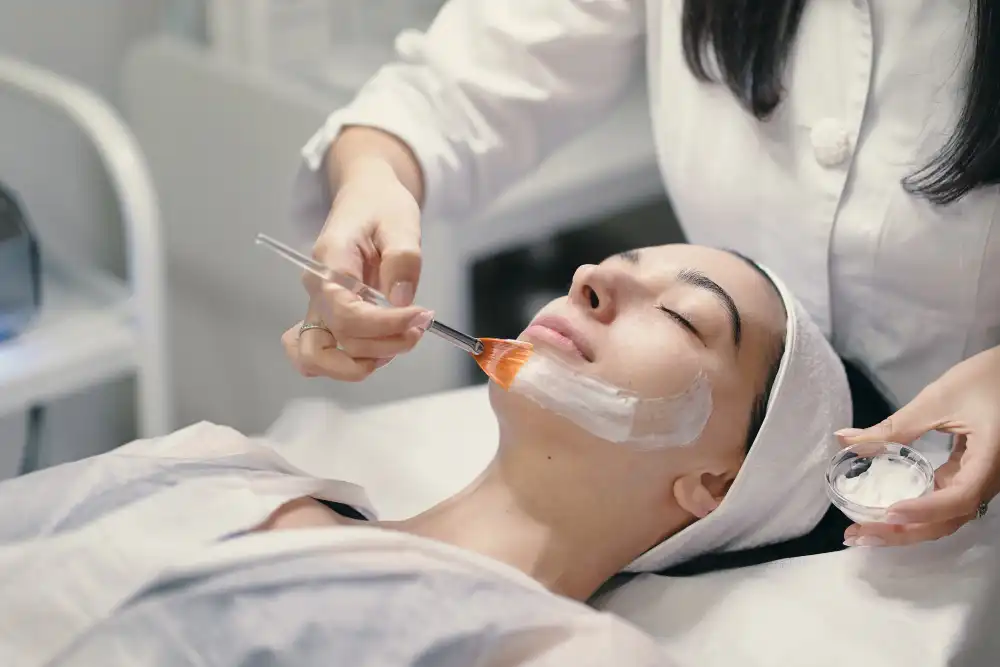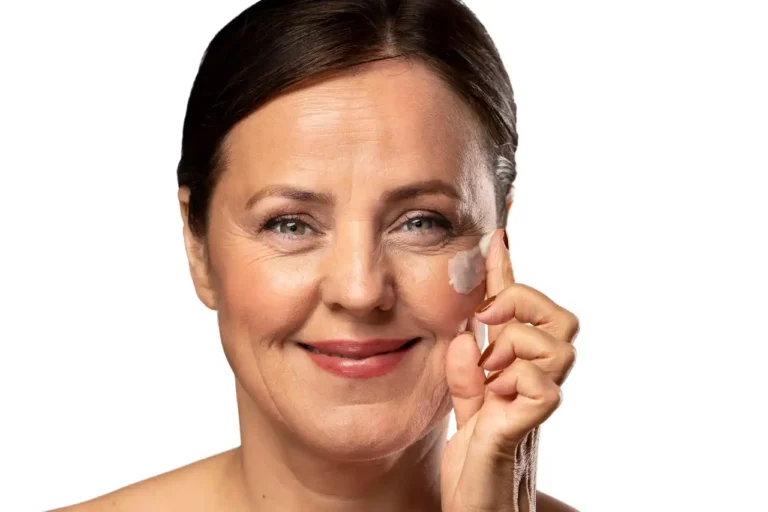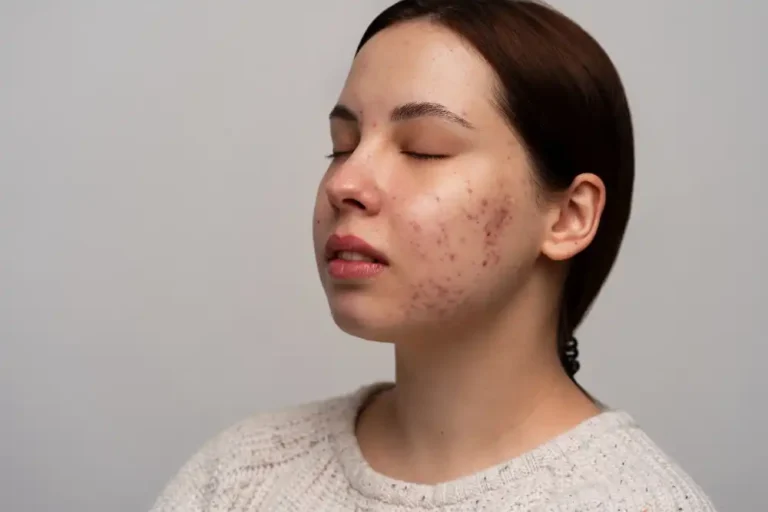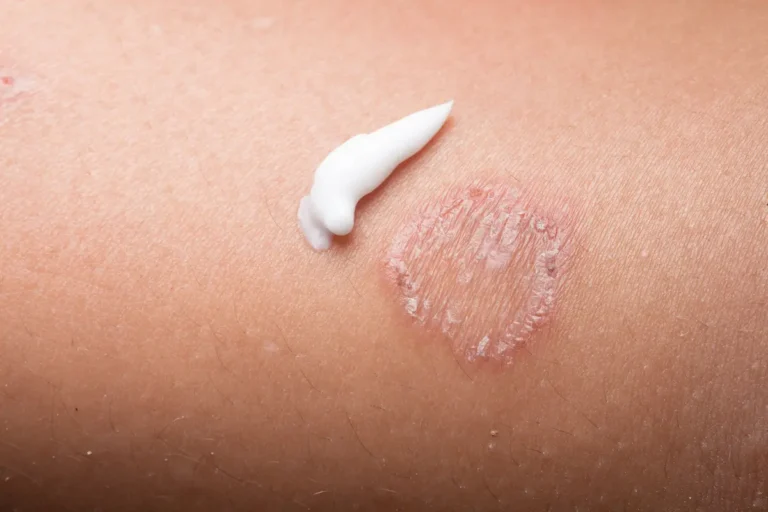Two of the most common treatments to enhance skin texture and tone are chemical peel treatment and laser resurfacing treatment. Both aim to reduce the appearance of premature signs of aging, such as fine lines, wrinkles, sun damage, hyperpigmentation, or post-acne scars.
However, many clients often wonder which treatment is better if they serve a similar purpose. Let’s explore this topic to understand the differences and benefits of each.
Laser resurfacing treatment
This treatment makes use of targeted laser lights on the skin to remove the dead skin cells, and this process assists in the synthesis of collagen (the structural protein of skin matrix).
Collagen helps to maintain the skin integrity and improvises the signs of fine lines and wrinkles as well as pigmentation patches. This laser technology is of two types –
- Non-ablative lasers – This type works wonders to deal with mild pigmentation patches or mild fine lines as the target layer is the one below the skin’s outermost surface. These include fractional lasers and pulsed-dye lasers.
- Ablative lasers – Ablative lasers are inclusive of CO2 lasers or erbium lasers that target the outermost skin’s surface and help in assisting in the case of deep wrinkles, severe acne scars etc.

- Role in dealing with the signs of premature aging –
For effective removal of damaged skin layers and stimulation of collagen synthesis, ablative lasers are of great help. Hence, those individuals who have wrinkles or saggy skin can definitely go for such lasers.
- Role in dealing with acne scars –
Ablative lasers, which include fractional CO2 and erbium lasers, are quite effective in healing the scars caused by acne as such lasers work by targeting a specific skin layer and renew the skin’s texture.
- Role in dealing with pigmentation –
Hyperpigmented skin or an uneven skin tone can be well treated with non-ablative lasers as they remove the dead skin cells and give boost to collagen synthesis. Hence, sunspots and melasma can be well treated with fractional lasers or pulsed-dye lasers.
- Recovery time –
The time to recover post laser resurfacing depends upon the intensity of the laser beam used. Non-ablative lasers generally require lesser recovery time, varying between 3-7 days, accompanied by mild redness or swelling. On the other hand, if ablative laser treatment is taken, 7-14 days are needed with significant redness and swelling in the treated area.
Chemical peels treatment
This treatment option makes use of a chemical solution on the skin to exfoliate the dead skin cells and tender the skin smooth and even-toned. Depending upon the degree of skin concern, these belong to three categories
- Superficial peels – These peels use mild ingredients such as glycolic acid or salicylic acid and help to treat mild acne or pigmentation etc. by targeting the skin’s outermost layer only.
- Medium peels – They use chemicals of little higher strength such as trichloroacetic acid (TCA) which can penetrate into the deeper layers of the skin and target deeper issues. For example – acne scars, age spots or moderate wrinkles can be removed with medium peels.
- Deep peels – Deep seated wrinkles or severe scarring can be dealt with such peels, by making use of strong ingredients such as phenols.

- Role in dealing with the signs of premature aging –
Superficial peels or medium peels do assist in reducing the appearance of fine lines, but when it comes to wrinkles, this treatment is not as effective as laser resurfacing and hence those with deeper wrinkles should not go for chemical peel treatment.
- Role in dealing with acne scars –
When it comes to superficial peels, they are not effective for healing deeper scars. Varying with the intensity of peel and depth of scar, this treatment can vary in its effectiveness, with medium peel being quite grateful to remove acne scars.
- Role in dealing with pigmentation –
Chemical peels are also a great treatment option for dealing with pigmentation patches. While superficial peels can help to overcome sun spots or mild melasma, deep peels or medium peels can be used for deep seated pigmentation patches.
- Recovery time –
With a minimum downtime of 1-3 days, superficial peels are quite effective. Medium peels show signs of peeling on the skin and need 7-14 days for proper recovery. But deep peels show significant peeling and scabbing and require the largest recovery time of 14-21 days.
Concluding remark for choosing one
Varying with the patient’s requirements or skin concerns, the choice of treatment needed varies. When it comes to serious skin concerns such as deep acne scars, deep seated wrinkles or skin burns, laser resurfacing is quite effective.
Also for those aiming long-term results, this treatment works wonders and improves skin texture as well as tone. Even minimalistic skin issues can also be well dealt with non-ablative lasers, which have minimum recovery time.
Chemical peels are the preferred choice for ensuring the healing of mild skin issues, namely fine lines or mild acne scars. Also superficial peels are relatively safe for all the skin types and can work as a great option to make the skin look fresh and radiant. Sometimes, your dermatologist may recommend a combination of both for fruitful results.




